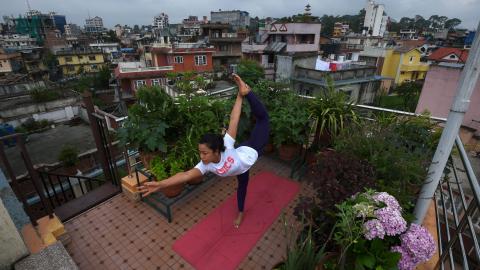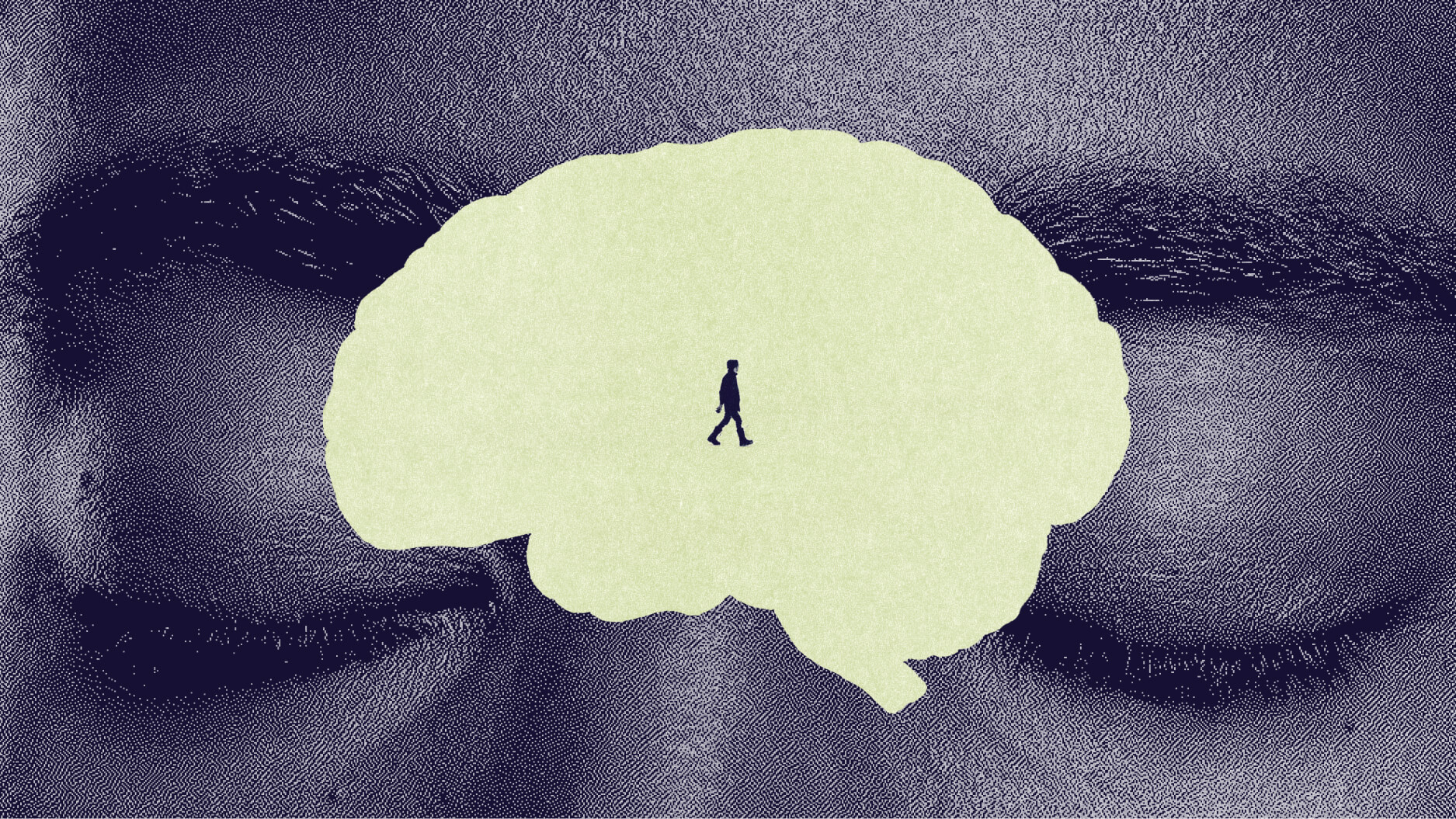How exercise changes your brain biology and protects your mental health

PRAKASH MATHEMA/AFP via Getty Images
As with many other physicians, recommending physical activity to patients was just a doctor chore for me – until a few years ago. That was because I myself was not very active.
Over the years, as I picked up boxing and became more active, I got firsthand experience of positive impacts on my mind. I also started researching the effects of dance and movement therapies on trauma and anxiety in refugee children, and I learned a lot more about the neurobiology of exercise.
I am a psychiatrist and neuroscientist researching the neurobiology of anxiety and how our interventions change the brain. I have begun to think of prescribing exercise as telling patients to take their “exercise pills.” Now knowing the importance of exercising, almost all my patients commit to some level of exercise, and I have seen how it benefits several areas of their life and livelihood.
We all have heard details on how exercise improves musculoskeletal, cardiovascular, metabolic and other aspects of health. What you may not know is how this happens within the brain.
How exercise improves the brain.
Brain biology and growth
Working out regularly really does change the brain biology, and it is not just “go walk and you will just feel better.” Regular exercise, especially cardio, does change the brain. Contrary to what some may think, the brain is a very plastic organ. Not only are new neuronal connections formed every day, but also new cells are generated in important areas of the brain. One key area is the hippocampus, which is involved in learning and memory and regulating negative emotions.
A molecule called brain-derived neurotrophic factor helps the brain produce neurons, or brain cells. A variety of aerobic and high-intensity interval training exercises significantly increase BDNF levels. There is evidence from animal research that these changes are at epigenetic level, which means these behaviors affect how genes are expressed, leading to changes in the neuronal connections and function.
Moderate exercise also seems to have anti-inflammatory effects, regulating the immune system and excessive inflammation. This is important, given the new insight neuroscience is gaining into the potential role of inflammation in anxiety and depression.
Finally, there is evidence for the positive effects of exercise on the neurotransmitters – brain chemicals that send signals between neurons – dopamine and endorphins. Both of these are involved in positive mood and motivation.
Exercise improves clinical symptoms of anxiety and depression
Researchers also have examined the effects of exercise on measurable brain function and symptoms of depression and anxiety. Exercise improves memory function, cognitive performance and academic achievement. Studies also suggest regular exercise has a moderate effect on depressive symptoms even comparable to psychotherapy. For anxiety disorders, this effect is mild to moderate in reducing anxiety symptoms. In a study that I conducted with others among refugee children, we found a reduction in symptoms of anxiety and PTSD among children who attended eight to 12 weeks of dance and movement therapies.
Exercise could even potentially desensitize people to physical symptoms of anxiety. That is because of the similarity between bodily effects of exercise, specifically high-intensity exercise, and those of anxiety, including shortness of breath, heart palpitation and chest tightness. Also, by reducing baseline heart rate, exercise might lead to signaling of a calmer internal physical environment to the brain.
It is important to note that the majority of studies examined the effects of exercise in isolation and not in combination with other effective treatments of clinical anxiety and depression, such as psychotherapy and medication. For the same reason, I am not suggesting exercise as a replacement for necessary mental health care of depression or anxiety, but as part of it, and for prevention.
There are other perks besides the neurobiological impacts of exercise. When going out for a walk, one gets more exposure to sunlight, fresh air and nature. One of my patients befriended a neighbor during her regular walks, leading to regular taco Tuesdays with that new friend. I have made some great friends at my boxing gym, who are not only my motivators, but also a great supporting social network. One might pick a dog as their running mate, and another might meet a new date, or enjoy the high energy at the gym. Exercise can also function as a mindfulness practice and a respite from common daily stressors, and from our electronic devices and TV.
By increasing energy and fitness level, exercise can also improve self-image and self-esteem .
Practical ways for a busy life
So how can you find time to exercise, especially with all the additional time demands of the pandemic, and the limitations imposed by the pandemic such as limited access to the gyms?
- Pick something you can love. Not all of us have to run on a treadmill (I actually hate it). What works for one person might not work for another. Try a diverse group of activities and see which one you will like more: running, walking, dancing, biking, kayaking, boxing, weights, swimming. You can even rotate between some or make seasonal changes to avoid boredom. It does not even have to be called an exercise. Whatever ups your heartbeat, even dancing with the TV ads or playing with the kids.
- Use positive peer pressure to your advantage. I have created a group messaging for the boxing gym because at 5:30 p.m., after a busy day at the clinic, I might have trouble finding the motivation to go to the gym or do an online workout. It is easier when friends send a message they are going and motivate you. And even if you do not feel comfortable going to a gym during the pandemic, you can join an online workout together.
- Do not see it as all or none. It does not have to be a one-hour drive to and from the gym or biking trail for a one-hour workout vs. staying on the couch. I always say to my patients: “One more step is better than none, and three squats are better than no squats.” When less motivated, or in the beginning, just be nice to yourself. Do as much as possible. Three minutes of dancing with your favorite music still counts.
- Merge it with other activities: 15 minutes of walking while on the phone with a friend, even around the house, is still being active.
- When hesitant or low on motivation, ask yourself: “When was the last time I regretted doing it?”
- Although it can help, exercise is not the ultimate weight loss strategy; diet is. One large brownie might be more calories than one hour of running. Don’t give up on exercise if you are not losing weight. It is still providing all the benefits we discussed.
Even if you do not feel anxious or depressed, still take the exercise pills. Use them for protecting your brain.
Arash Javanbakht, Associate Professor of Psychiatry, Wayne State University
This article is republished from The Conversation under a Creative Commons license. Read the original article.





